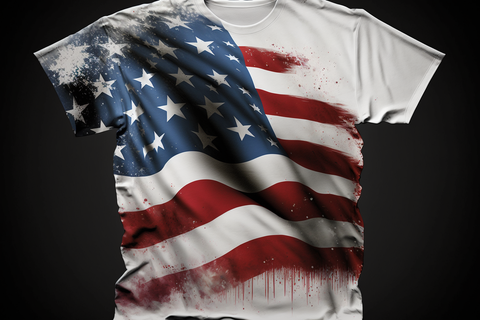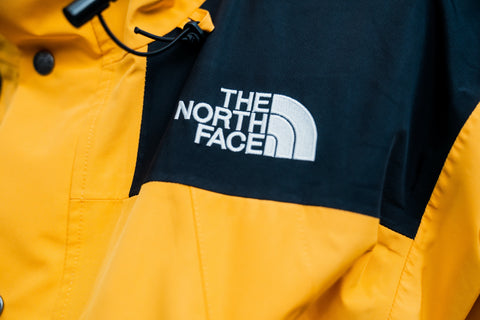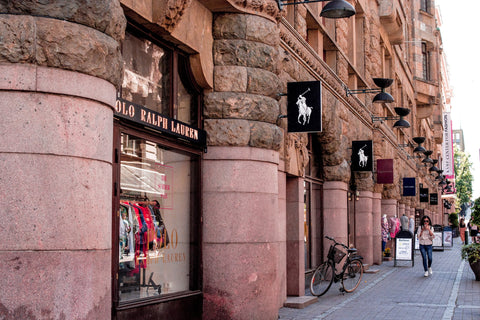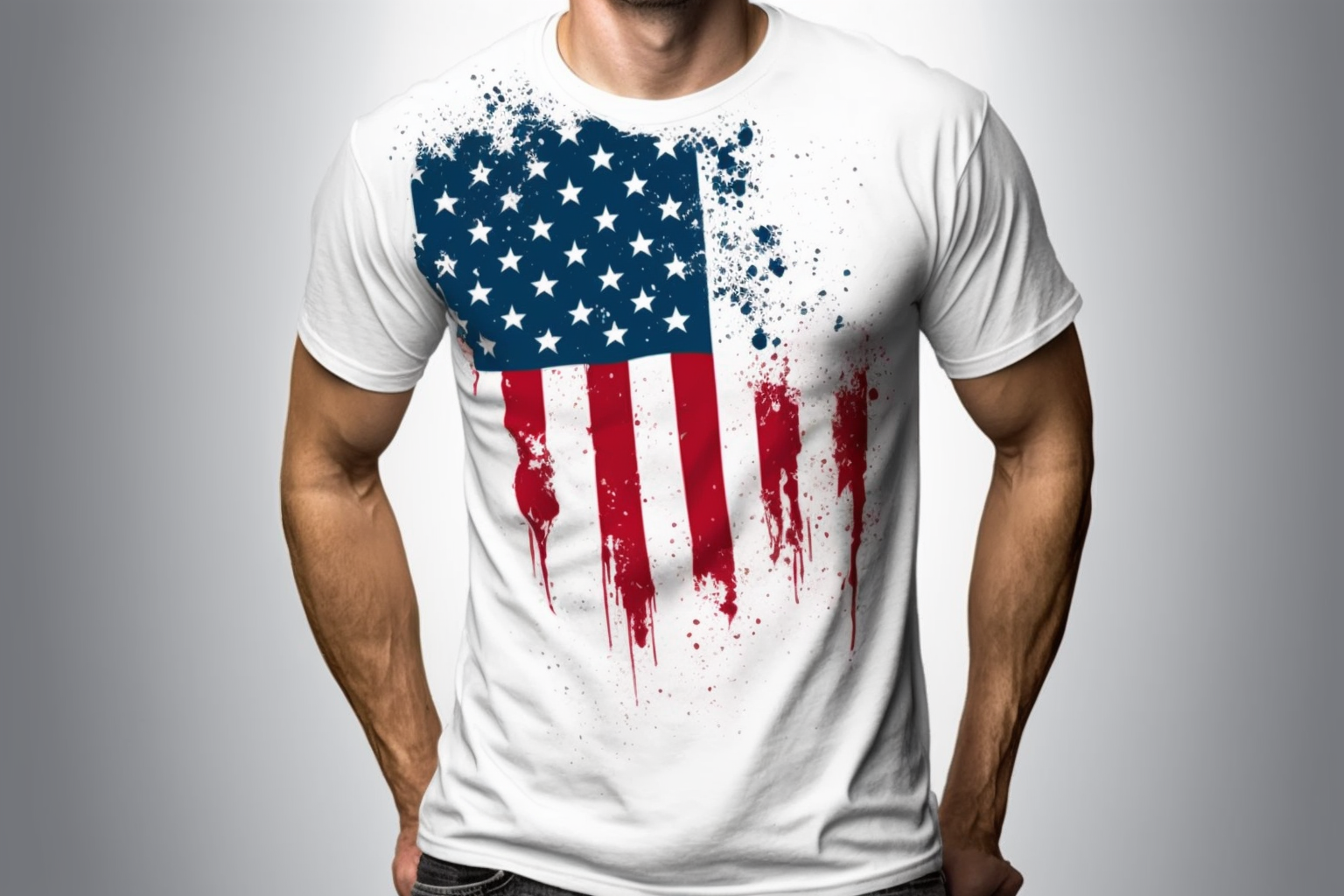American clothes are made in a variety of places across the world. The production of clothing for American consumers is often outsourced to countries where labor costs are lower, such as Mexico and China. This allows companies to keep their prices competitive while still providing high-quality garments.
The majority of American clothing is manufactured from raw materials that originate in other parts of the world, such as cotton from India or polyester from Japan.
These materials are then shipped to factories in the country they were sourced from or elsewhere around the globe, depending on cost and availability.
Here they will be cut into pieces and stitched together using industrial machines before being sent off for finishing touches like buttons, zippers, and labels. Once finished, these items can then be exported back to America for sale at retail stores.
American-made apparel has some distinct characteristics that make it stand out amongst imported goods.
Many domestic producers focus on creating well-crafted garments with an emphasis on attention to detail and quality construction techniques which results in higher durability than many foreign counterparts offer.
Domestic production means shorter lead times when it comes time to restock shelves with new styles since there isn’t any overseas shipping involved;
This makes it easier for retailers to stay ahead of fashion trends and meet consumer demand quickly and efficiently compared to imports coming from far away countries where delays due transportation issues can occur frequently due customs regulations or weather conditions impacting port operations along major trade routes.
As a result, American-made clothes generally have a reputation for being more expensive than imported apparel but also tend to last longer thanks not only to better manufacturing practices.
But also due stricter laws governing safety standards which protect both workers’ rights as well as provide peace of mind regarding use by end customers who prefer know what exactly went into making their garment without having wonder if child labor was used during the production process or whether certain chemical treatments utilized could cause harm once worn directly against the skin.

Understanding the Global Garment Industry
In order to fully understand where most American clothes are made, it is important to consider the global garment industry. While some clothing items are still manufactured domestically, a great majority of apparel is now sourced and produced abroad.
In fact, in 2017 alone imports of textiles and apparel accounted for $77 billion in the United States. This staggering figure illustrates just how much international trade has influenced the US clothing market over time.
The globalization of production processes has enabled consumers access to low-cost garments from around the world at a fraction of their original cost. Companies like H&M have been able to capitalize on this by setting up factories in countries such as Bangladesh which offer cheaper labor costs than their counterparts elsewhere. As a result, companies can pass those savings onto customers while still generating profits for themselves – making international sourcing an attractive proposition for many businesses operating within the garment sector today.
However, with globalization comes certain risks that must be managed by these companies when it comes to ethical practices and compliance with local regulations regarding workers’ rights and safety standards in different countries they operate in; something that has become increasingly difficult given increased scrutiny from both media outlets as well as government entities worldwide seeking greater accountability from corporations doing business abroad.
Manufacturing Clothes: A Look at the Process of Garment Production
The process of manufacturing clothes is one that has evolved over time and remains a complex, yet rewarding endeavor. From the selection of materials to the final touches, garment production involves an intricate series of steps to ensure a quality product.
Raw materials such as cotton, wool, and synthetic fibers are selected based on their characteristics and intended purpose for use in the clothing item. The fabric is then cut into pieces according to pattern instructions before being stitched together by industrial sewing machines or hand-sewn depending on the type of garment. Trimmings such as buttons, zippers, and other embellishments are then added for visual appeal or functionality purposes before garments go through further inspections for any defects or imperfections prior to shipment.
Garments can undergo various treatments like stone washing or acid wash which alters their texture, look, or color thus making them distinct from other similar items produced elsewhere. In addition, these treatments can also make fabrics more durable against wear and tear so they last longer when worn by consumers. As each step passes through quality control checks along the way until completion it ensures that customers receive products meeting their expectations every single time they purchase them in stores across America – proving just how much care goes into producing fashionable apparel for everyday life.
American-Made Clothing: A Brief Overview of Domestic Manufacturing
Domestic production of apparel has a long history in the United States. Before the mid-20th century, nearly all clothing was made domestically; however, with increasing global competition and technological advances, this is no longer true. Although many American-made clothes are now manufactured overseas, there remains a small but vibrant market for domestic products.
In recent years, some companies have begun to focus on producing high-quality items at competitive prices within the United States. These businesses employ skilled workers and utilize modern equipment to craft garments that meet exacting standards of quality control. Many of these firms use sustainable materials and processes in order to reduce their environmental impact while creating fashionable pieces that will last for years to come.
It is important to note that buying American-made clothing can often support local communities as well as stimulate job growth throughout our country’s economy. Supporting such brands gives back directly by keeping money circulating within America’s borders rather than being sent abroad – an investment that benefits individual citizens and helps promote further economic development both here and abroad.
Offshoring Garment Production: The Rise of Made in China
For decades, the United States has been the leader in clothing production. However, with rising labor costs and advances in technology, garment makers have increasingly turned to offshore as a way of saving money while still creating quality garments. The most significant beneficiary of this trend has been China – where wages are low and infrastructure is plentiful – which now manufactures more than one-third of all apparel sold globally.
Offshoring garment production to China began during the late 1980s and early 1990s when companies such as Nike and Gap began contracting Chinese factories for their manufacturing needs. Since then, hundreds of other fashion brands have followed suit – from luxury labels like Prada to fast-fashion giants like Zara. By outsourcing their production overseas, these companies can drastically reduce overhead costs associated with running a domestic factory – from labor costs to materials – thus allowing them to produce products at much lower prices than if they were manufactured domestically.
The influx of foreign investment into Chinese factories over the past two decades has also led to an increase in productivity and efficiency in Chinese garment manufacturing processes due to improved equipment, better training programs for workers, and increased access to higher-quality fabrics. This has enabled China’s apparel industry not only to become more competitive on the global market but also to offer greater variety in styles and design options than ever before – making it easier for customers around the world to find fashionable clothes that meet their needs without breaking the bank.
Challenges to American Manufacturing: Clothes Made Overseas
The growing number of clothes made overseas is a challenge to American manufacturing. The cost of labor and production is often cheaper outside the United States, making it more profitable for companies to move their operations elsewhere. This has had an impact on the amount of clothing produced in America, as well as jobs related to the industry.
This trend has been particularly evident in recent years with popular retail stores such as Forever 21 and H&M selling apparel manufactured abroad at low prices. These types of stores are known for providing trendy yet affordable clothing options which many consumers find attractive due to budget constraints or personal preference. However, this means that American manufacturers must compete with foreign markets on price and quality if they hope to stay relevant in the fashion world.
There have been reports about unsafe working conditions in some countries where these items are produced. This can create ethical dilemmas for companies that may be unaware of how their products are being made or who may be unable to monitor factory conditions closely enough from afar. As a result, many brands have taken steps towards promoting transparency when it comes to production practices by releasing statements regarding human rights violations or setting up factories closer so they can better ensure safe working environments for employees overseas.

Sourcing American-Made Clothes: Tips for Finding Domestic Brands
When it comes to purchasing American-made clothing, the search for domestic brands can be a bit tricky. Fortunately, there are several resources and tips that consumers can use to locate these items.
The first step in sourcing American-made clothing is doing some research. Many websites offer lists of manufacturers and stores that specialize in producing or selling domestic products. These sites often provide detailed information on where the clothes were produced and their source materials. Many apparel companies list this information directly on their website as part of their product descriptions.
Another great way to find out which companies produce domestically made clothing is by asking retailers directly about the origin of their garments during shopping trips or online chats with customer service representatives. This will give shoppers an opportunity to learn more about specific products before making a purchase decision, allowing them to make sure they are buying what they need while also supporting local businesses and economies.
Another option for finding American-made clothing is through thrift stores or secondhand shops such as Goodwill or Salvation Army locations across the country. In addition to being budget-friendly, these shops often have vintage pieces from local designers and makers – giving shoppers access to unique styles that would otherwise be difficult (or impossible) to find elsewhere.
The Case of Carhartt: A Successful American-Made Clothing Factory
One of the most successful American-made clothing factories is Carhartt, a Detroit-based company. Founded in 1889, Carhartt has provided quality garments for over 130 years. The brand’s products are designed to stand up to the toughest conditions and provide comfort while doing so. The company uses only premium materials, like cotton twill and heavy-duty nylon, as well as innovative technologies like Force ExtremesTM fabric technology to ensure that their clothes will last for years.
The majority of Carhartt’s production takes place at two facilities in Tennessee: one in Livingston and one in Manchester. At these locations, garment workers employ cutting-edge techniques to produce some of the finest clothing available on the market today. All raw materials used by Carhartt are sourced from within America; this includes everything from buttons and zippers down to threading needles and fabric dyes. As such, when you buy a piece of clothing from Carhartt you can be sure that it was made with pride right here in the USA!
What sets apart this iconic American brand even further is its commitment to environmental sustainability. All of their production processes are strictly monitored throughout each step – ensuring minimal water usage during dyeing operations and using energy-efficient light fixtures whenever possible – helping reduce wastefulness while still producing excellent quality garments year after year.

Examining the Importance of Domestic Garment Production
As the demand for American-made clothing continues to rise, many consumers are turning their attention to domestic garment production as a way of supporting their local economies.
This is an important factor in contributing to job growth and economic development throughout the nation. Domestic garment manufacturing can also help reduce the environmental impact of overseas shipping, with fewer resources required for transportation and less waste produced from long-distance transport.
Not only does domestic garment production create jobs and support local businesses, but it also offers advantages in terms of quality control. When clothes are manufactured domestically, companies have greater oversight in ensuring they meet safety standards and use materials sourced responsibly from reliable suppliers. Being able to manufacture garments closer to home allows brands more flexibility when responding quickly to changing trends or customer needs without having wait times associated with international shipments.
Buying American-made clothing not only supports U.S.-Based manufacturers but helps protect intellectual property rights which would otherwise be at risk if those same designs were replicated by foreign competitors who may sell them at lower prices due to reduced labor costs or other advantages outside of our own borders. Ultimately this serves both individual customers seeking high-quality items as well as small businesses looking for ways of protecting their brand’s reputation in a global marketplace where counterfeiting has become increasingly common.
Conclusion
It looks like the days of “made in America” clothing are becoming a thing of the past. According to the Bureau of Labor Statistics, only 3.5 percent of clothing manufactured in the U.S. is actually American-made clothing. That means 96.5 percent of the clothing we wear comes from another country, like China. It’s a bummer to hear this news, especially when we think about the people who make our clothes overseas. But let’s face it, American retailers began to develop their commitment to manufacturing in another country where they can save big bucks.
Even though the average American household spent a lot on clothing last year, patriotism doesn’t seem to be a top priority when it comes to fashion design. It’s a shame to see the decline of garment factories in the U.S., but we can’t ignore the convenience of online shopping and the allure of trendy brick-and-mortar stores. So next time you slip on your favorite pair of denim or cozy pajamas, just remember where they were actually manufactured. We may not be able to bring back 100 percent American-made clothing, but we can still be an adopter of ethical fashion and support the people who make our clothes, no matter where they come from.

FAQs
Where are most American clothes made and why?
As of 2021, a whopping 95 percent of clothing and shoes purchased by the average American household were foreign-made, with developing countries like China and Latin America being the top producers.
Cheap labor and relaxed trade policies have incentivized many companies to move their manufacturing operations overseas, where they can produce clothes at a fraction of the cost. However, this has had negative effects on local textile mills, seamstresses, and the American textile industry as a whole. Nevertheless, some companies have committed to manufacturing in the United States, offering individual attention and small batches of locally made clothing and shoes.
Are there any American-made clothing brands that I can support?
Yes, there are still some American-made clothing brands that you can support if you’re feeling patriotic or want to reduce your carbon emissions from global supply chains. Family-owned businesses like Lafayette and Nordstrom offer locally made clothing and shoes, while larger retail chains like J.C. Penney have adopted “made in America” lines. However, keep in mind that American-made products may come at a higher cost due to minimum wage requirements and other restrictions and duties.
Why did so many manufacturing operations move overseas?
Between 1990 and 2011, the number of people working in the garment industry in the U.S. fell by a whopping 84 percent, as many operations moved overseas to take advantage of cheaper labor and fewer restrictions. NAFTA and other trade policies also contributed to the rise of foreign-made clothing. While the pandemic has sparked some interest in locally made goods, it remains to be seen if this trend will continue in the long term.
Should I buy clothes made in the United States?
It’s worth considering buying clothes made in the U.S. if you’re looking to support local businesses or reduce your carbon footprint. However, not all American-made products are created equal, and it’s important to do your research on the manufacturing operations offered by each brand.






